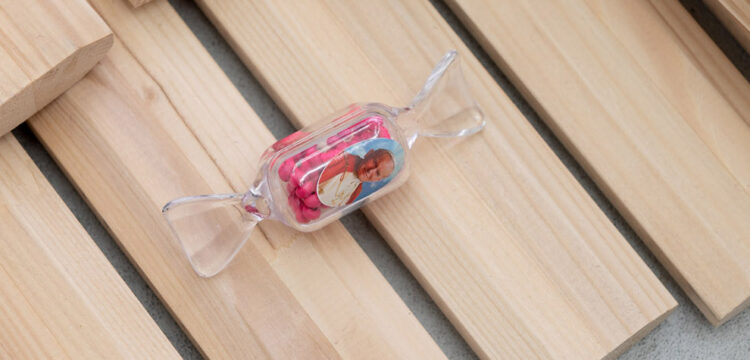Do Not Move Stones
Artists’ potential for extractivist tendencies
Do Not Move Stones explores the transmission of intangible cultural heritage on Tinos island, Cyclades, Greece. In November and December of 2023, I was introduced to marble practices by the artist Filippos Kagiorgis, and art historian and residency founder, Patricia Pulles. Much of what I experienced during the residency had to do with adjusting to a different sense of time, scale, and purpose, as well as getting a taste of life in a small village where everyone knows each other and goats clamber into the front yard. The essay, Do Not Move Stones delves into that experience and touches upon artists’ potential for extractivist tendencies.
Part I
Every year as autumn fades to winter, there is a period of forty unpredictable days and nights on this island where the weather is tempestuous and fickle. Sunny and warm during the day, but cold and stormy at night, this weather reminds me of the expression yama-no-tenki in Japanese, which I often heard when I used to live in the mountains of Yamanashi prefecture, near Mount Fuji. A literal translation would be “mountain weather,” but its idiomatic expression describes a recklessly carefree, or moody person, and I suppose the term could have applied to me back then when I was earnestly yet erratically searching for a position and place I could call my own. But here on Tinos, years later, I felt the landscape deserved this description more than I ever did. Thunder reverberating across rocky mountains made me imagine that I was on a ship at sea instead of housed on firm ground. Perhaps this is typical of island storms, I thought, because the sea reflects sound differently than it does on the continent and that makes it hard to guess the sound’s source. In spite of the fact that I was safely in my borrowed bed, I felt vulnerable as I listened to it, and I embraced the romantic image I allowed myself at that moment: I was a small figure on a dark, rocky island.
I prefer daytime arrivals when I’m going somewhere for the first time, but arriving in the dark was unavoidable when I went to the village of Pyrgos to begin the marble residency. I’d spent the morning traveling from Amsterdam to Athens by plane, and then by bus to the port of Rafina, where I waited five hours until the sunset departure of the Andros Queen ferry. Gliding across the Aegean under night’s heavy cloak, I reached the Cycladic island of Tinos about four and a half hours later and found a cab at the port to take me to the village of Pyrgos. The driver’s son had arrived on the same ferry so we rode together and I sat in the backseat wondering where I was as we curved up and down the dark, winding mountain roads. About ten minutes after passing the faintly lit village of Isternia, the driver dropped me off in front of the home and workshop of marble sculptor Filippos Kagioris.
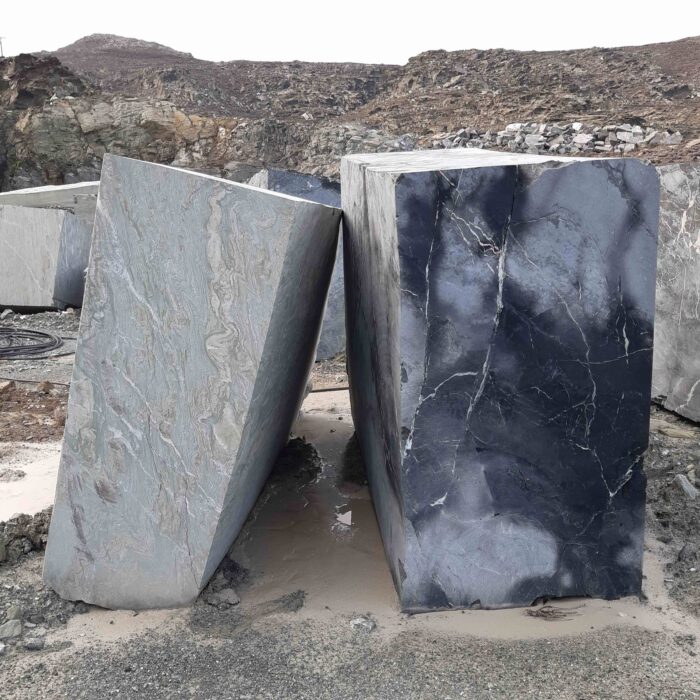
Filippos is one of the few still-practicing marble artists in Pyrgos village, which has historically been the home of many stone craftspeople, artists and students; the island itself is known for its numerous marble quarries and the church of Panagea in Tinos, where thousands of people make annual religious pilgrimages and place offerings. In the early years of the formation of the modern Greek nation state, young men on Tinos could choose from three professional fields: working at sea, in a quarry, or for the church. As a teenager, Filippos spent a strenuous and unhappy year working on a large trade ship, traveling to the Americas as far as Louisiana in the US, and all around the Mediterranean. By the end of the year he gratefully disembarked in Rome and made his way back to Tinos, certain that the sea life was not for him. And because he was not interested in becoming a priest, he took the third and last option, and decided to follow in the artistic footsteps of his father, who was a woodcarver. Since then he has followed the path of marble, working with “the bones of the earth,” in his words.
In spite of its population of around 300 year-round inhabitants and its slower winter speed, Pyrgos is not a sleepy, nearly forgotten village. In those late November weeks, my social life was far more active than it is where I live in The Hague, a city of over half a million people, though it is well known that cities can be the loneliest of all places. Pyrgos thrives because of the rhythm of its inhabitants, people of different ages and phases in life who have known each other for years and greet each other warmly, neighbors who share meals, goods and gossip on a daily basis. Because of the recent drought, wild goats have been venturing into the residential areas too, and once I came back from the workshop in the morning to find ten shaggy goats in the front yard eating what little was left of an already ravished fig tree. Orange, calico, white and black cats also gently and playfully live out their days in a convivial relationship with humans; they are well-cared for and everyone knows where to find Marco, the devoted local man who regularly feeds them and takes care of the special cases, for example when an injured cat has been found.
Marco is not an exception. Everyone has at least one clearly defined role here, each with a profession or special skill and each with their affinities. At the same time, that does not imply that anyone is reduced to caricature. Psychic and emotional auras are more easily detected in such a small, closely knit village because everyone has more time and interest to study one another. One senses the mood of a neighbor from a distance as they speak without saying a word. Her steady gait, or his distracted amble, convey a message and an energy, and when those bodies meet at the square or on the marble-paved streets, people recognize themselves in each other. We are each other’s mirrors, as a good friend of mine likes to say.
There are no police in the village, and their absence offers a sense of ease. Meanwhile, people watch each other closely, and they look out for each other. I expect it might feel both oppressive and liberating to know that you are held by a community, much like a family with all of its joys and traumas. Within a few days I have the feeling that everyone knows who I am, and my role here has been communicated. I am perceived bluntly as a foreign student of Filippos who doesn’t speak more than a few words of Greek, though I could pass for a local by looks alone. Nobody knows what I do for a living, or my political views, or any details of my personal life. I am not quite a tourist, but neither am I a long-term resident like the students who learn to work with marble at the three-year preparatory and professional school of fine arts at Pyrgos. When it becomes known that I am also a writer, a familiar pattern plays out where the people I speak to express a desire that their story will become a part of the still unwritten narrative. At the tavern where Filippos and Patricia like to go almost every evening, I assure everyone that they will all be in the (still non-existent) book, and now I think that what began as a short essay has, through some combination of fantasy and demand, been imagined as something larger. Whether it will live up to their expectations remains to be seen.
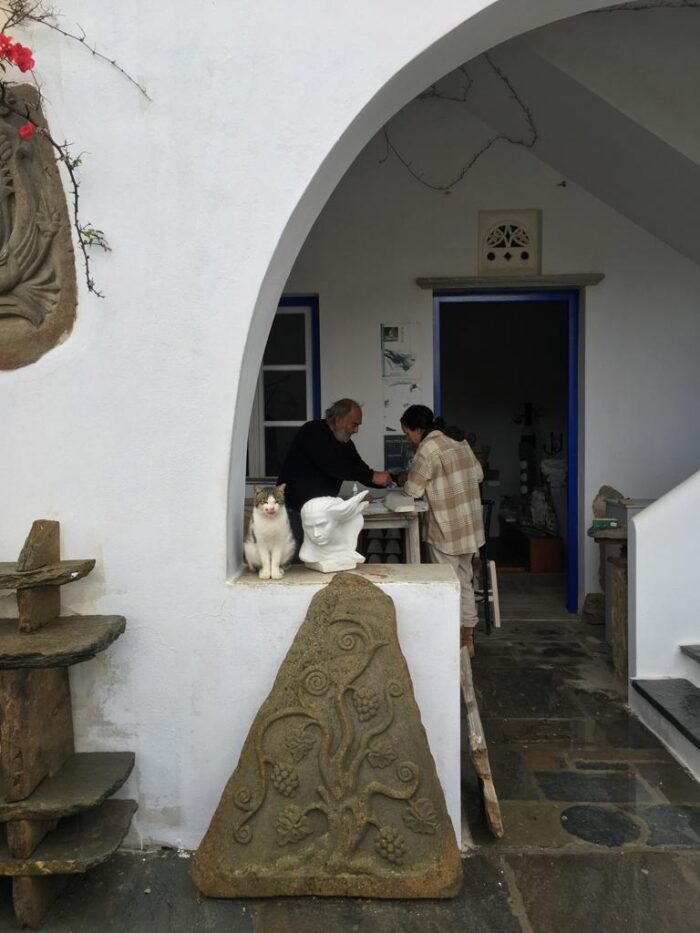
Patricia Pulles, who translated much of what I said in English to Greek for the benefit of Filippos, plays a special role as she is a relative newcomer to the village. With dedication, intelligence, and curiosity, she has found a meaningful way to weave herself into the life of the village. Her sincerity is perhaps most lovingly expressed in the residency project she began nearly two years ago, which is what brought me and a few other residents to Pyrgos in the first place. Educated in The Netherlands as an art historian, she spent several years in Naples working on the residency project Il Ventre di Napoli, a collaboration between artists and the city of Naples, whereafter she moved to Pyrgos during the pandemic. Since then, she has made a project of bringing researchers and artists to Filippos’ workshop through the marble residency to learn directly from him and absorb the social and material culture of the village and its surroundings. Logically, the residency begins with a visit to one of the quarries, an experience which discloses the simple truth that all of our artistic and architectural materials are of the earth, and that what is taken out can never be returned. Once a piece of marble is removed from a quarry it cannot be put back.
Part II
“Marble in Greece is a nearly inexhaustible resource.” I read that proud declaration on a wall text at the Marble Museum in Pyrgos, and the blatant contradiction it holds has quietly occupied my thoughts, only to surface at unexpected moments, like when I think about my work as an artist, or how any resource could ever be inexhaustible. Marble quarries are scattered across the island of Tinos. A few are spectacularly large and somehow theatrical in their dimensions, while others are so small that you might stumble across them without even looking for them. Walking past a gaping mouth on the side of a mountain, you will notice dug-out spots where a small amount of marble was found and abandoned shortly after; nearby you might find initials carved into the stones by workers and children, alongside years dating from the 1920s up until about the 1970s. But extraction processes have an even longer history, going back to the period of Venetian rule of the island from 1207 to 1715. From here we can trace a path when talking about the extraction and processing of Tinian marble as a form of intangible cultural heritage. This heritage involves social and economic aspects such as apprenticeships, workshops, tools and techniques, machinery, as well as the products or outcomes associated with the extraction of raw material, which are artistic and architectural designs, assembly, and installation of these forms. Some of the larger sites are still active, but many are, euphemistically speaking, retired. Which is to say that they have been exhausted, or that the workers have been exhausted, or that the economic demand has been exhausted.
The deep green marble Tinos is famous for represents a tangible manifestation of extractivist logic and its inherent exhaustion. Due to the presence of an asbestos-like mineral, this marble is avoided in production methods generating dust, such as sculpture, and instead is preferred for architectural uses such as floors. Despite the common knowledge that the dust was carcinogenic, workers were exposed to it from its inception in 1911 up until the 1980s. The labor force operated in an unregulated and under-protected environment. In a word, expendable. Throughout the 20th century, and peaking in the 1980s, the quarry supplied beautiful green marble to affluent customers worldwide, until a similar marble was discovered in India and China, available at a lower cost due to global economic disparities. Consequently, the mining of green marble, while still active, has significantly slowed down.
What remains now is a mecca for photographers, cultural producers, social media trend-setters and influencers, who travel to Tinos to generate images of a self-centered narrative in the photogenic quarry, taking whatever can still be found in the torn-open mountainside as the camera robs what is left of its soul. The green marble quarry perfectly models a progression of extractivism that mirrors the late-capitalist condition: from the industrial revolution where materials were extracted from the earth with little or no regard for the environment or the labor force, to the abandonment of the project as soon as it could be replaced at a lower cost by a site in an earlier stage of industrialism, to the final death throes signified by the marketable, manufactured, “social” image, dubious cultural productions and hollow-eyed tourism. Returning full circle to the phrase “nearly inexhaustible” in the line at the marble museum that caught my eye, I uncomfortably contemplate what else might be exhausted from this mountainside.
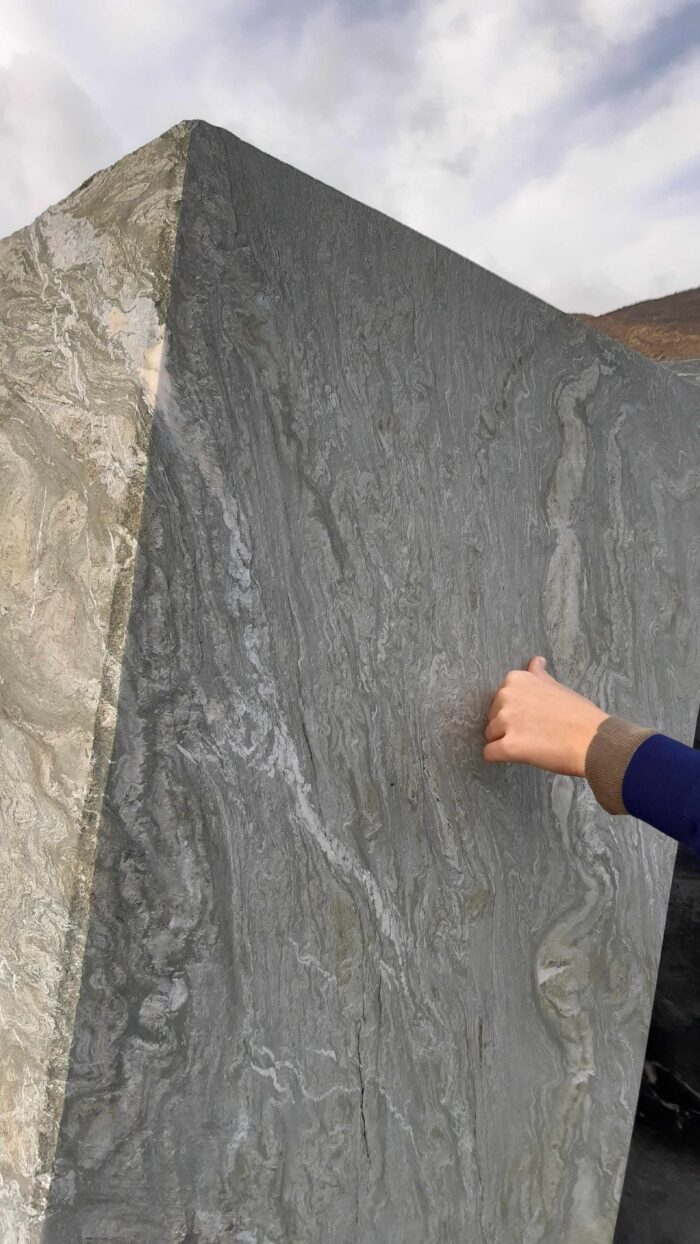
Before I came to Tinos, I came across Aliki Panagiotopoulou’s short, critical review of a new book Marble in Metamorphosis in the well-read art journal e-flux. The critic sharply points out that the publication by Rachel Cusk and Chris Kontos claims to “contemplate the physical and cultural life of marble” yet has been published by an Australian property development company active in Athens. It’s well known that photography, even when it not deliberately highlighting the natural features of an environment, often has a promotional effect, and can quickly become marketing content. But even writing admiringly about a place has the potential to damage an environment or heritage it ostensibly wants to protect. I felt acutely aware of not wanting to share too many beautiful photos of Tinos on social media for this reason, while at the same time I struggled with an urgency I felt to transmit a sense of “the good life” I was enjoying as a sign of hope, imagination and possibility to others.
A residency can also sway in the direction of tourism and extraction for an artist or its organizers. This can happen unintentionally, when a relationship to the place is not established or desired. Scale sets the course of the experience, in this case, the set-up involves an encounter with the home of marble and the people who work with it, as well as their shared history and unwritten future. The marble residency does well here, and is deliberately intimate, with a maximum of four artists invited over the course of the year: two in spring, and two in autumn. Filippos’ and Patricia’s generosity and hospitality, together with the comfortable domesticity of sharing a home with the other resident Maria Mavromichali, let me imagine that I’d temporarily become a member of a gentle family while I observed the interplay between the micro dimensions (family, village, island, personal history) and the macro (city, continent, society, economic and political history). It was tempting to stay longer, perhaps for the rest of my life and I considered it as a viable possibility. I could understand the magnetism of these islands, and, if you’ll forgive the obvious Greek reference, I could see why Odysseus was trapped by Calypso for so long. But my carefree yama-no-tenki days are over, and in spite of my time in Japan, or perhaps because of it, I am much more at ease on the continent than I am on islands.
Between two extremes, from the inconceivable billions of years of earth’s formation to the patient hours spent leveling the uneven surface of a hunk of marble, I was provoked to attempt to negotiate a new planetary and philosophic position for myself. Where in this long line of thinking is the role of heritage, which is associated with conservation, culture, power, and longevity? Enormous efforts are made to conserve cultural heritage yet, in an absurd anthropocentric irony, we tend to ignore the material origins of the artistic materials themselves, which have been aggressively and irreversibly extracted from the earth. The Acropolis in Athens, for example, which many Tinian marble artists skillfully restored between 1975 and 2002, was the result of the removal and relocation of a piece of the earth. Marble, like fossil fuels, coal, lithium or anything else that is mined, is never an inexhaustible resource.
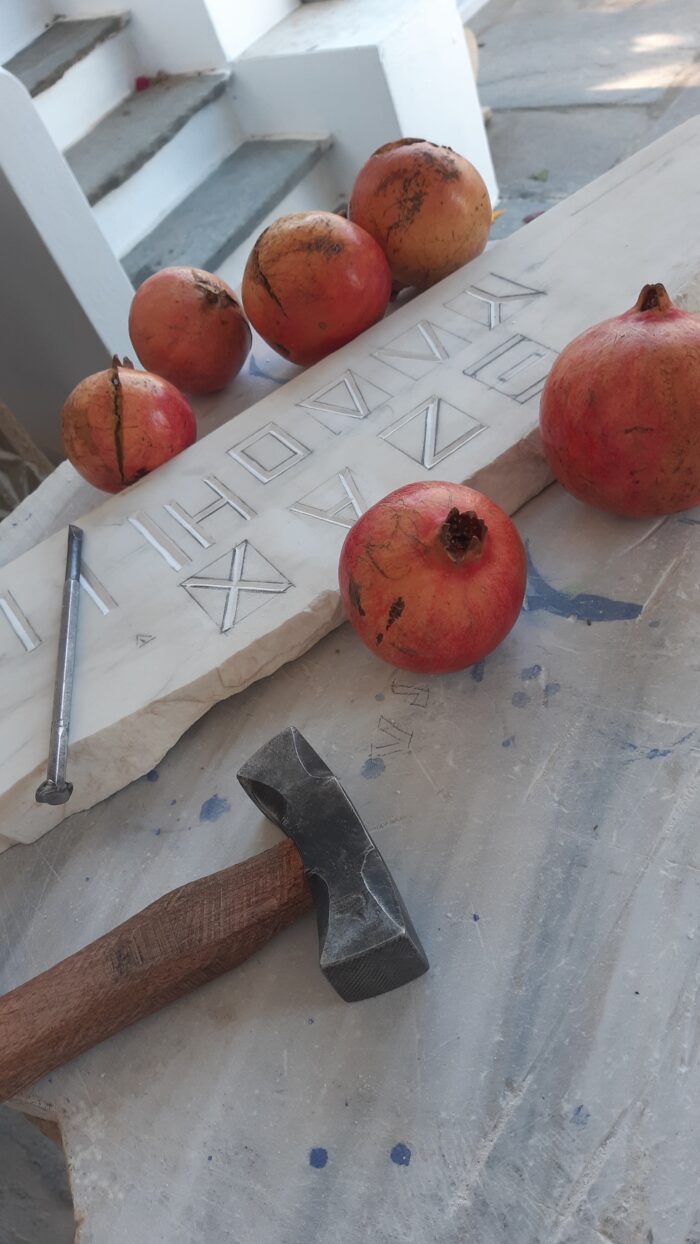
On a personal note, this month, I am working on a piece of Carrara marble that spent about 200 million years in its current state before being extracted, loaded on a truck, and driven to The Hague by fossil fuel. From The Hague, this gorgeous block of white marble with grey veins traveled to Vilnius by a large truck to sit near the entrance of the 17th century Sapieha Palace that has recently been restored, to be inaugurated as a new cultural space of the CAC Vilnius this Spring. With the skills acquired in Pyrgos through the transmission of intangible cultural heritage, I will chisel six Latin words into this prehistoric material. One face of the marble will bear a personal dedication DIEBUS NOCTIBUSQUE DEPLORATIS, literally “for all the days and nights deplored,” wherein “deplore” takes an earlier meaning of “mourning something that is lost, or has gone missing.” The other side of the marble is reserved for INSTANTIS AURAE TEMPORIS, which literally translates to “for the scent/aura/breath of now.” And it is between these two faces that I think I have found my position.
Since 2013, the Tinian marble craft has been listed on the National Inventory of Intangible Cultural Heritage of Greece, and on UNESCO’s Representative List of Intangible Cultural Heritage of Humanity (2015). This fact resonated with me during my residency when I engaged more with my hands than I have for several years now, since my art practice has been centered on writing and performance following a heavily theoretical master’s education in the Netherlands. I haven’t had a proper studio to work with my hands for most of my life as an artist. And I have to confess that before I went to Pyrgos, I was worried about not being physically able to carve marble, or motivated and patient enough to justify spending hours doing it when I was more used to intellectual labor, which tends to be more sedentary. But the paradox of intangible heritage being felt so intensely felt in the body gave me the energy I needed. Heritage is always, necessarily material even when it is elusive. I found that over a period of only forty unpredictable days, it is possible to access intangible cultural heritage, both in the mountains and quarries where the geological and historical layers are visible, and in the workshop handling a piece of marble. With the help of a teacher, whose hand guides yours, you will chip away at marble with a rhythmic stroke of the iron mandraka, a hammer-like tool, and strike a flat, tongue-like chisel called a glossa, which, most fittingly, is also used to carve out words.
Do not move stones. A translation of Sappho’s fragment no.145 in ancient Greek to English by Canadian poet Anne Carson in If Not, Winter.
Thanks to Filippos Kagiorgis, Patricia Pulles, Maria Mavromichali, Artur Kodra, Igor Sevcuk, Grigoris Rizakis, Virginija Januskeveciute, Christoph Pieper.




